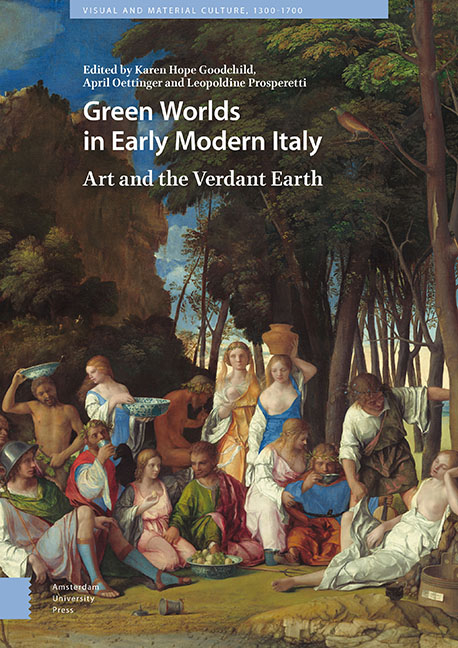Book contents
6 - Verdant Architecture and Tripartite Chorography: Toeput and the Italian Villa Tradition
Published online by Cambridge University Press: 21 November 2020
Summary
Abstract
This essay seeks to demonstrate the Flemish painter Lodewijk Toeput's engagement with the pictorial tradition, the design practice, and the theoretical discourse on gardens and landscapes in sixteenth-century Italy, through the examination of two interrelated facets of Italian villa design observed in his key works: first, the prominent use of verdant architecture; and second, the use of such vegetal structures to denote boundaries, specifically the one between the garden and the broader landscape. It further seeks to establish cultural associations between Toeput's garden and landscape representations and the system of tripartite chorography prevalent in Italian Renaissance design and theory, the tendency to comprehend the earthly human domain in three concrete categories, formulating a mental map in three divisions.
Key words: Garden design, garden theory, Italian villa, landscape painting, depiction of nature, green architecture
Francisco de Holanda's Da pintura antigua (1548) records a learned conversation in which Michelangelo Buonarroti explains Flemish art to Vittoria Colonna:
The painting of Flanders […] will generally satisfy any devout person more than the painting in Italy. […] They paint in Flanders only to deceive the external eye, things that gladden you and of which you cannot speak ill, and saints and prophets. Their painting is of stuffs, bricks and mortar, the grass of the fields, the shadow of trees, and rivers and bridges, which they call landscapes, and little figures here and there; and all this, although it may appear good to some eyes, is in truth done without reasonableness or art, without symmetry or proportion, without care in selecting or rejecting, and finally without any substance or verve. Flemish painting […] tries to do so many things at once (each of which alone would suffice for a great work) so that it does not do anything really well.
Michelangelo's summary of Flemish art, stemming from his deep engagement in the practice and theory of Italian art, contrasts the paintings of the two regions in a way that illuminates my study on Lodewijk Toeput (Ludovico Pozzoserrato, Antwerp, 1550 – Treviso, 1605). A painter of Flemish origins who was active in Italy, Toeput was aware of and responsive to the differing theoretical models of painting implicit in Michelangelo's criticism, and pioneered the merging of Flemish and Italian landscape traditions. After training with Marten de Vos in Antwerp, Toeput went to Venice around 1573 and joined Tintoretto's workshop; he subsequently settled in Treviso around 1582.
- Type
- Chapter
- Information
- Green Worlds in Early Modern ItalyArt and the Verdant Earth, pp. 131 - 152Publisher: Amsterdam University PressPrint publication year: 2019



